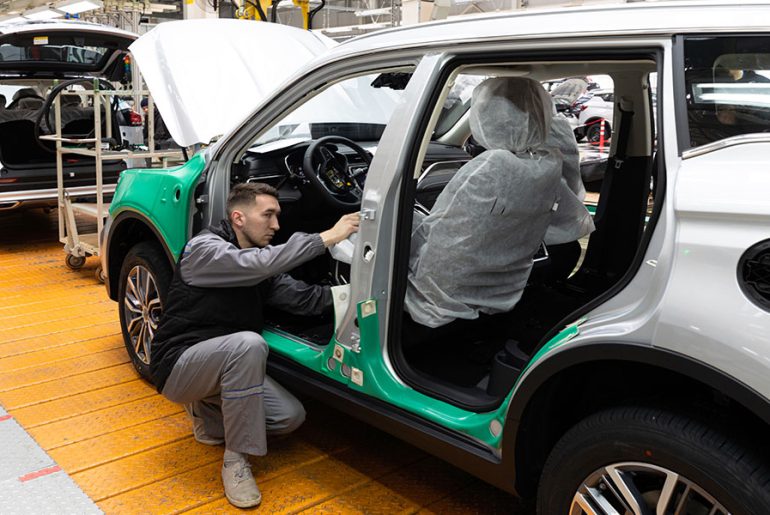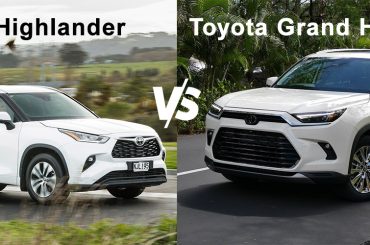Toyota has established itself as one of the world’s largest automakers, with manufacturing facilities spanning across multiple continents. Understanding where your Toyota vehicle originates can provide valuable insights into its quality, features, and specifications.
Toyota’s Manufacturing Philosophy
Toyota operates on a decentralized manufacturing model, producing vehicles close to their target markets. This approach reduces shipping costs, minimizes environmental impact, and allows for better customization based on regional preferences. The company maintains strict quality standards across all facilities, ensuring consistency regardless of production location.
The Japanese automaker has invested heavily in overseas production since the 1960s, establishing manufacturing plants strategically positioned to serve local and regional markets effectively.
Toyota Manufacturing in Japan
Primary Production Centers
Japan remains Toyota’s manufacturing heartland, housing 16 production facilities primarily concentrated around Toyota City in Aichi Prefecture. These plants serve as the global headquarters for research, development, and production of flagship models.
The Motomachi Plant, established in 1959, produces premium vehicles including the Crown and various Lexus models. Meanwhile, the Tahara Plant focuses on high-end vehicles like the Lexus LS and Toyota Land Cruiser, incorporating advanced automation technologies.
Key Japanese Manufacturing Locations
| Plant Name | Location | Primary Models | Specialization |
| Motomachi | Toyota City | Crown, Lexus Models | Premium Vehicles |
| Tahara | Tahara | Lexus LS, Land Cruiser | High-end Vehicles |
| Tsutsumi | Toyota City | Prius, Corolla | Compact Cars |
| Miyata | Miyawaka | Commercial Vehicles | Trucks & Vans |
| Yoshiwara | Susono | Engine Components | Engine Production |
Tsutsumi Plant handles compact car production, manufacturing vehicles like the Prius and Corolla for both domestic and export markets. The Miyata Plant specializes in commercial vehicles and pickup trucks, while the Yoshiwara Plant produces engines and drivetrain components.
Japanese facilities typically export vehicles to markets worldwide, particularly luxury models and hybrid vehicles where Toyota maintains technological leadership.
United States Manufacturing Operations
Major Production Facilities
Toyota operates 11 manufacturing plants across the United States, representing a significant investment in American production capabilities. These facilities produce approximately 70% of Toyota vehicles sold in the US market.
The Georgetown, Kentucky plant stands as Toyota’s largest North American facility, producing over 500,000 vehicles annually. Primary models manufactured include the Camry, Avalon, and ES 350, along with various four-cylinder engines.
State-by-State Manufacturing Overview
| State | Location | Primary Models | Annual Capacity | Employees |
| Kentucky | Georgetown | Camry, Avalon, ES 350 | 500,000+ | 9,000+ |
| Indiana | Princeton | Highlander, Sienna, Sequoia | 420,000 | 7,000+ |
| Texas | San Antonio | Tacoma, Tundra | 220,000 | 3,200+ |
| Mississippi | Blue Springs | Corolla | 170,000 | 2,000+ |
| Alabama | Huntsville & Troy | Engines & Components | N/A | 1,800+ |
Kentucky Operations The Georgetown facility employs over 9,000 workers and has undergone multiple expansions since opening in 1988. The plant incorporates Toyota’s latest manufacturing technologies and environmental initiatives.
Indiana Manufacturing Toyota’s Princeton, Indiana facility produces the Highlander, Sienna, and Sequoia. The plant also manufactures engines and has received recognition for its environmental sustainability efforts.
Texas Production Hub The San Antonio facility specializes in full-size pickup trucks, producing the Tacoma and Tundra. This plant represents Toyota’s commitment to the American truck market with significant local sourcing of components.
Mississippi Operations Blue Springs, Mississippi focuses on compact car production, primarily manufacturing the Corolla for North American markets. The facility emphasizes efficiency and lean manufacturing principles.
Alabama Manufacturing Toyota operates engine plants in Huntsville and Troy, Alabama, supplying powertrains to various North American assembly facilities. These plants produce both four-cylinder and V6 engines.
European Manufacturing Network
| Country | Location | Primary Models | Market Focus |
| United Kingdom | Burnaston | Corolla, Corolla Touring Sports | European Market |
| United Kingdom | Deeside | Engines & Components | Global Export |
| France | Onnaing | Yaris, Yaris Cross | European Market |
| Turkey | Sakarya | Corolla, C-HR | Europe & Middle East |
United Kingdom Operations
Toyota’s Burnaston plant in Derbyshire produces the Corolla and Corolla Touring Sports for European markets. The facility has operated since 1992 and underwent significant modernization to accommodate hybrid vehicle production.
The Deeside engine plant in Wales produces engines for European-assembled vehicles and exports powertrains to other Toyota facilities worldwide.
French Production
The Onnaing plant in northern France manufactures the Yaris and Yaris Cross for European distribution. This facility focuses on small car production optimized for European driving conditions and preferences.
Turkish Manufacturing
Toyota’s facility in Sakarya, Turkey produces the Corolla and C-HR for both domestic consumption and export to surrounding regions. The plant serves as a strategic hub for Eastern European and Middle Eastern markets.
Asia-Pacific Manufacturing Centers
| Country | Location | Primary Models | Regional Role |
| Thailand | Gateway & Ban Pho | Vios, Yaris, Hilux | Southeast Asian Hub |
| Indonesia | Karawang | Avanza, Rush | Local & Export |
| India | Bidadi | Innova Crysta, Fortuner | Indian Market Focus |
| Philippines | Santa Rosa | Vios, Innova | Local Production |
| Malaysia | Shah Alam | Vios, Camry | Regional Assembly |
Thailand Operations
Thailand serves as Toyota’s Southeast Asian production hub, with facilities in Gateway and Ban Pho. These plants manufacture various models including the Vios, Yaris, and Hilux pickup truck for regional distribution.
Indonesian Manufacturing
Toyota operates multiple facilities in Indonesia, focusing on compact cars and multipurpose vehicles suited to local market demands. The Karawang plant produces the Avanza, Rush, and various other models for domestic and export markets.
Indian Production
Toyota’s Bidadi plant in Karnataka produces vehicles specifically designed for the Indian market, including the Innova Crysta and Fortuner. The facility emphasizes cost-effective manufacturing while maintaining quality standards.
Popular Toyota Models by Manufacturing Location
| Model | Primary Manufacturing Location | Secondary Locations |
| Camry | Georgetown, Kentucky (USA) | Japan, Thailand |
| Corolla | Blue Springs, Mississippi (USA) | Japan, Turkey, Thailand |
| RAV4 | Cambridge, Ontario (Canada) | Japan |
| Prius | Toyota City, Japan | N/A |
| Highlander | Princeton, Indiana (USA) | Japan |
| Tacoma | San Antonio, Texas (USA) | N/A |
| 4Runner | Tahara, Japan | N/A |
| Yaris | Onnaing, France | Japan, Thailand |
Quality Standards Across Global Facilities
Toyota maintains uniform quality standards through its Toyota Production System (TPS), implemented across all manufacturing locations. Each facility undergoes regular audits and quality assessments to ensure consistency.
The company’s “Global One Toyota” initiative ensures that vehicles produced at any facility meet the same stringent standards regardless of location. This approach has helped Toyota maintain its reputation for reliability and durability worldwide.
Supply Chain and Component Sourcing
Toyota emphasizes local sourcing of components and materials, supporting regional economies while reducing transportation costs and environmental impact. Each manufacturing region typically sources 60-80% of components locally.
The company works closely with supplier networks to ensure quality standards and just-in-time delivery principles are maintained across all production facilities.
Manufacturing Investment by Region
| Region | Total Investment | Number of Plants | Primary Focus |
| North America | $28+ billion | 14 | Full-size vehicles, Trucks |
| Europe | $8+ billion | 6 | Compact cars, Hybrids |
| Asia-Pacific | $15+ billion | 25+ | Regional models, Export hub |
| Japan | $45+ billion | 16 | Premium vehicles, R&D |
Conclusion
Toyota’s global manufacturing network demonstrates the company’s commitment to serving local markets while maintaining consistent quality standards. From its origins in Japan to facilities across North America, Europe, and Asia-Pacific, Toyota has successfully implemented its production philosophy worldwide. Understanding where your Toyota is manufactured provides insight into the extensive global network that supports one of the world’s most trusted automotive brands. Whether produced in Georgetown, Kentucky, or Toyota City, Japan, each vehicle benefits from decades of manufacturing expertise and continuous improvement principles.





